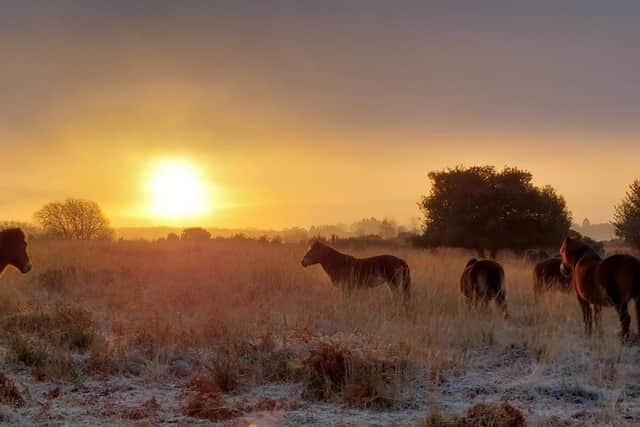Hardy ponies work the winter shift on Ashdown Forest
and live on Freeview channel 276
The Forest has 35 semi feral Exmoor ponies that are moved around to graze the specialist habitats that help to ensure the survival of many of the Forest’s rare species of plants and animals. The ponies live on the Forest for the whole year, whereas the sheep and cattle are moved off for the Winter months and returned in the Spring.
Ash Walmsley, Ashdown Forest’s Countryside Manger said: “Exmoor Ponies are well adapted to life on the Forest. They are a native British breed originally from Exmoor in Devon and Somerset. They are a hardy breed which can withstand the low temperatures and the poor grazing common to the lowland heath areas that we need to preserve on the Forest. Our ponies are usually divided into three smaller herds that are moved around the Forest to help keep our sites in the best condition possible.”
Advertisement
Hide AdAdvertisement
Hide AdAlthough the ponies are extremely hardy, they do need to be checked for regularly. A team of “Lookerers” monitor the ponies every day. These volunteers track the ponies in all weathers to ensure they are healthy and grazing the designated areas.


Rob Bright and his wife Di has been lookerers for several years. They usually check the ponies once or twice a week in rota with other volunteer checkers.
Rob said: “It is a privilege to help look after these incredible animals. Very occasionally they do get problems but mostly they are very adept at handling the toughest of conditions. Being a lookerer is a great way to get out onto the Forest for exercise and wellbeing, while doing something worthwhile.”
According to The Exmoor Pony Society the ponies came close to extinction during the second world war when some were stolen for food. But a small group of breeders protected the remaining stock and in the 1950s some were exported to Europe and Canada. Today the wild herds are protected and closely monitored to ensure the survival of the species and the purity of the gene pool. There are estimated to be 500 wild ponies living on Exmoor and 3500 in locations across the UK and overseas.
Ash added
Advertisement
Hide AdAdvertisement
Hide Ad“The Rare Breeds Survival Trust has a watch list for rare livestock breeds in the UK and the Exmoor pony is designated as a “priority” breed which essentially means they are endangered. It is great that we can play a small part in their survival, while they play an essential role in the future of Ashdown Forest.”